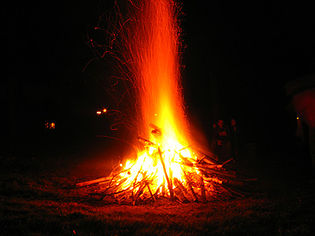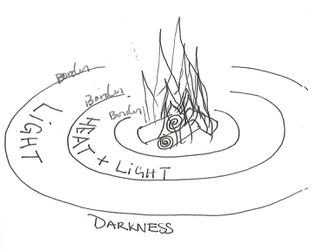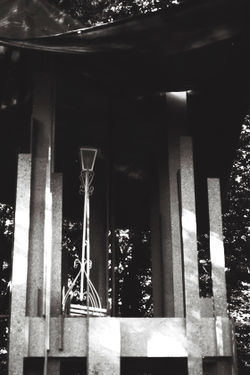atom11:Intimacy
From student
(Difference between revisions)
(→Psychological Intimacy) |
|||
| (48 intermediate revisions by 2 users not shown) | |||
| Line 1: | Line 1: | ||
| − | + | __NOTOC__ | |
| − | + | [[Atom11:home|'''Go Back''']] | |
| − | + | <div style="float:left; margin-left:150px; width: 900px; overflow:hidden; " > | |
| − | + | ===<font color= "#247705">Intimacy</font>=== | |
| − | + | ||
| − | + | ||
| − | + | ||
| − | + | ||
| − | + | ||
| − | ===Intimacy=== | + | |
---- | ---- | ||
| − | |||
in·ti·ma·cy | in·ti·ma·cy | ||
| Line 19: | Line 12: | ||
synonyms: belonging, closeness, inseparability, familiarity, nearness | synonyms: belonging, closeness, inseparability, familiarity, nearness | ||
| + | </div> | ||
| + | <br> | ||
| + | <br> | ||
| − | - | + | <div style="float:left; margin-left:150px; width: 900px; overflow:hidden; " > |
| − | + | <div style="float:left; margin-left:0px; width: 250px; overflow:hidden; " > | |
| − | = | + | |
| − | + | ||
| − | + | ||
| + | ===<font color= "#247705">Intimacy of the Refuge</font>=== | ||
---- | ---- | ||
| + | [[File:Pollanhouse.jpg|245px]] | ||
| + | “We are hypnotized by solitude, hypnotized by the gaze of the solitary house; and the tie that binds us to it is so strong that we begin to dream of nothing but a solitary house in the night. With the example of the hut and the light that keeps vigil on the far horizon, we have shown '''the concentration of intimacy in the refuge'''” | ||
| − | = | + | <br>Gaston Bachelard</div> |
| − | + | <div style="float:left; margin-left:20px; width: 630px; overflow:hidden; " > | |
| − | + | ||
| + | ===<font color= "#247705">Intimacy of Fire</font>=== | ||
---- | ---- | ||
| + | [[File:Kampvuur.jpg|315px]][[File:Firecircles.jpg|315px]] | ||
| + | Fire clearly defines the boundaries of intimate space in the concentric zones that surround it. | ||
| + | <br> The element itself is untouchable, thus it is an impenetrable barrier of sorts. | ||
| + | <br> Next comes 20 - 30 centimeters of space which is too hot for human occupation. | ||
| + | <br> The third zone from the center is finally safe and comfortable enough for human occupation. | ||
| + | <br> The next zone is marked by light but not heat. | ||
| + | <br> Ultimately, the light and heat are no longer noticable, the intimacy of the fire becomes intangible.</div> | ||
| + | </div> | ||
| + | <div style="float:left; margin-left:150px; width: 900px; overflow:hidden; " > | ||
| − | ==== | + | ===<font color= "#247705">Intimacy of Human Nearness</font>=== |
| − | + | ||
| − | + | ||
| − | + | ||
| − | + | ||
| − | + | ||
| − | + | ||
| − | + | ||
| − | + | ||
| − | + | ||
| − | + | ||
| − | + | ||
| − | + | ||
| − | + | ||
| − | + | ||
| − | + | ||
---- | ---- | ||
| − | |||
| − | |||
| − | |||
| − | |||
| − | |||
| − | |||
| − | |||
| − | |||
| − | |||
| − | |||
| − | |||
| − | |||
| − | |||
| − | |||
| − | |||
| − | |||
| − | |||
| − | |||
| − | |||
| − | |||
| − | |||
| − | |||
| − | |||
| − | |||
| − | |||
| − | |||
| − | |||
| − | |||
| − | |||
| − | |||
[http://sillyvilla.over-blog.com/pages/A_R_C_H_I_T_E_C_T_U_R_E-2565555.html'''Passillion'''] (link is in French) | [http://sillyvilla.over-blog.com/pages/A_R_C_H_I_T_E_C_T_U_R_E-2565555.html'''Passillion'''] (link is in French) | ||
Based on the theme of passion, this poetic project attempts to address the meeting, marriage and separation of a French art teacher (the client) and her late husband. The follie, as the function describes, is located on the client’s property in Giverny, France. Situated in the woods but overlooking an expansive hay field, the project responds to certain conditions of intimacy that are embedded in our subconscious. | Based on the theme of passion, this poetic project attempts to address the meeting, marriage and separation of a French art teacher (the client) and her late husband. The follie, as the function describes, is located on the client’s property in Giverny, France. Situated in the woods but overlooking an expansive hay field, the project responds to certain conditions of intimacy that are embedded in our subconscious. | ||
| + | <div style="float:left; margin-left:0px; width: 250px; overflow:hidden; " > | ||
| + | [[Image:Own space.jpg|250px]] | ||
| + | </div> | ||
| − | < | + | <div style="float:left; margin-left:20px; width: 630px; overflow:hidden; " > |
| − | + | ||
| − | + | ||
| − | + | ||
| − | + | ||
| − | + | [[Image:Edge condition.jpg|630px]] | |
This one small project actually embodies many examples from Alexander’s Pattern Language, including: [vertical] intimacy gradient, entrance room, a room of one’s own, and hierarchy of open space (referring to the siting). | This one small project actually embodies many examples from Alexander’s Pattern Language, including: [vertical] intimacy gradient, entrance room, a room of one’s own, and hierarchy of open space (referring to the siting). | ||
| − | + | </div> | |
| − | + | ||
| − | + | ||
| − | + | ||
| − | + | ||
| − | + | ||
| − | + | ||
| − | + | ||
| − | + | ||
| − | + | ||
| − | + | ||
| − | + | ||
| − | + | ||
| − | + | ||
| − | + | ||
| − | + | ||
| − | + | ||
| − | + | ||
Latest revision as of 15:39, 17 October 2011




